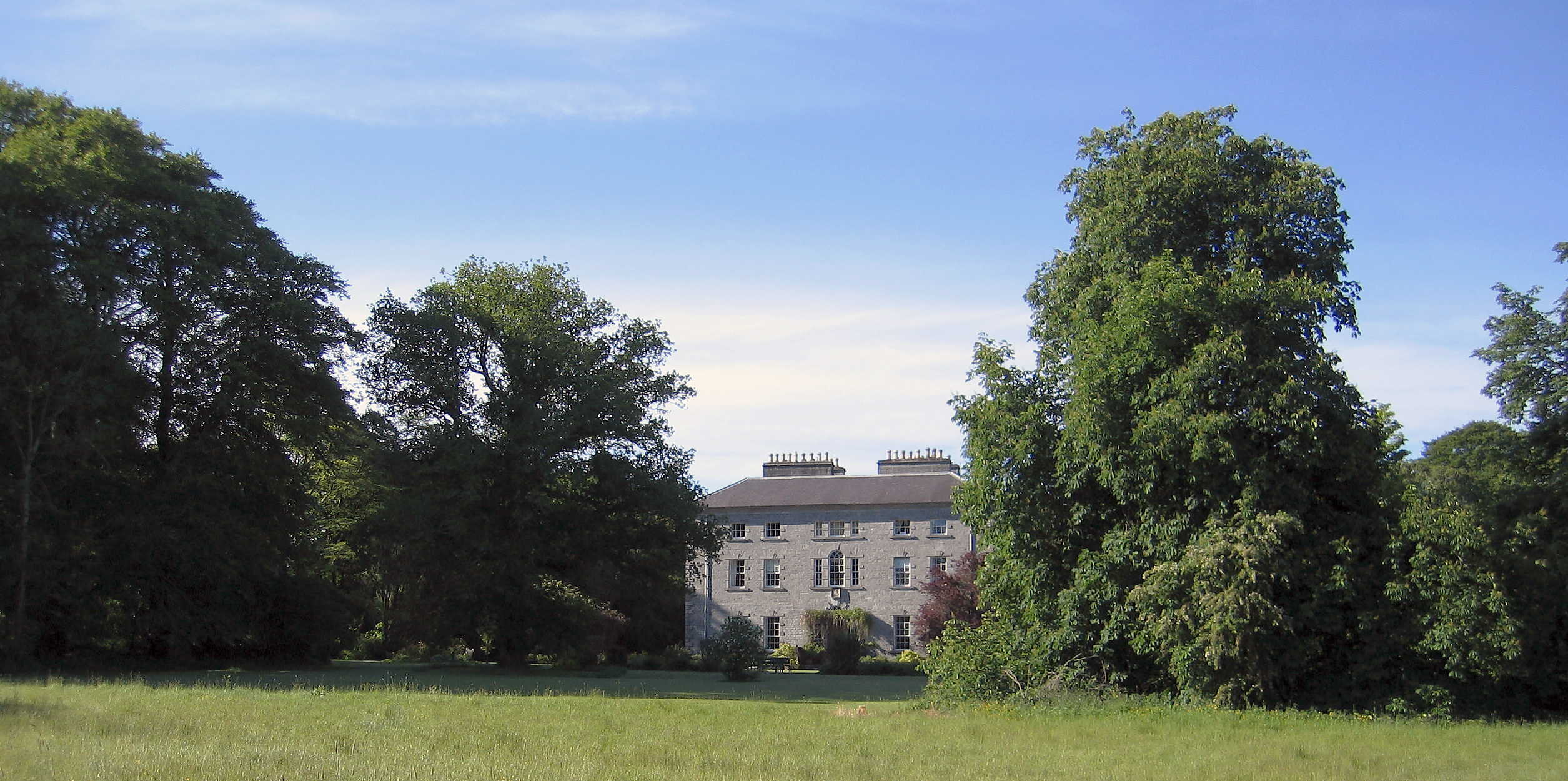Coopershill
Arthur Cooper and his wife Sarah lived in a sixteenth century fortified house on the River Unsin, near the pretty village of Riverstown. The story goes that, in the early 1750s, they engaged an architect, placed two buckets of gold sovereigns on the ground and instructed him to build a suitable house on a hill in the middle of their County Sligo estate, named Cooper’s Hill to perpetuate the family name. Reputedly, when the last sovereign was spent the walls had scarcely risen above the ground so Cooper was forced to sell land to complete the building.
Clearly it took some time to raise the necessary sum since the work did not conclude for a further twenty years. Probably as a result of its long gestation, Coopershill, which the late Knight of Glin attributed to Francis Bindon of Ennis, is rather dated in appearance, especially the exterior, which harks back to the style of the 1740s and 50s. The house, which consists of a ground floor and two upper stories over a basement, is built of crisply cut limestone ashlar with three formal fronts (two of which are virtually identical), a profusion of blocked rustication around the doors and windows, a handsome cornice and massive chimney stacks.
The windows are grouped together towards the centre of the five bay facades, which is usually considered an early feature. The round-headed, tripartite door-case is surmounted by Venetian window and the upper floor has a simpler arrangement using a regular central window flanked by slimmer sidelights.
The interior, with original chimneypieces and joinery of very high quality, is later in style. The service staircase is of stone yet, unusually for a country house of this importance, the fine principal staircase is constructed from timber in a reversal of the usual fashion. There is good decorative plasterwork of the 1770s, especially over the main staircase, and the tripartite arrangement is repeated at the inner end of the hall where a central door, directly opposite the front door, is surmounted by a fanlight and pediment, with deep niches to either side.
In 1810 Arthur and Sarah’s son, Arthur Brooke Cooper married Jane, daughter of Charles O’Hara from nearby Annaghmore, head of an important Gaelic sept in County Sligo. In 1860 their son, another Charles, inherited Annaghmore from his uncle and assumed the O’Hara name and arms. HIs eldest son inherited the O’Hara estates while his second son inherited Coopershill, where his descendants continue today, the 7th generation to live in the house in direct descent.
Address & Contact
Coopershill, Riverstown, Sligot: +353 71 9165108
Available as a Film Location
Houses and Garden
Groups by Arrangement
Culture and Education
Concerts, Plays or Recitals
Accommodation and Short Breaks
Overnight with Dinner
Events
Special family celebrations
Meetings or receptions


